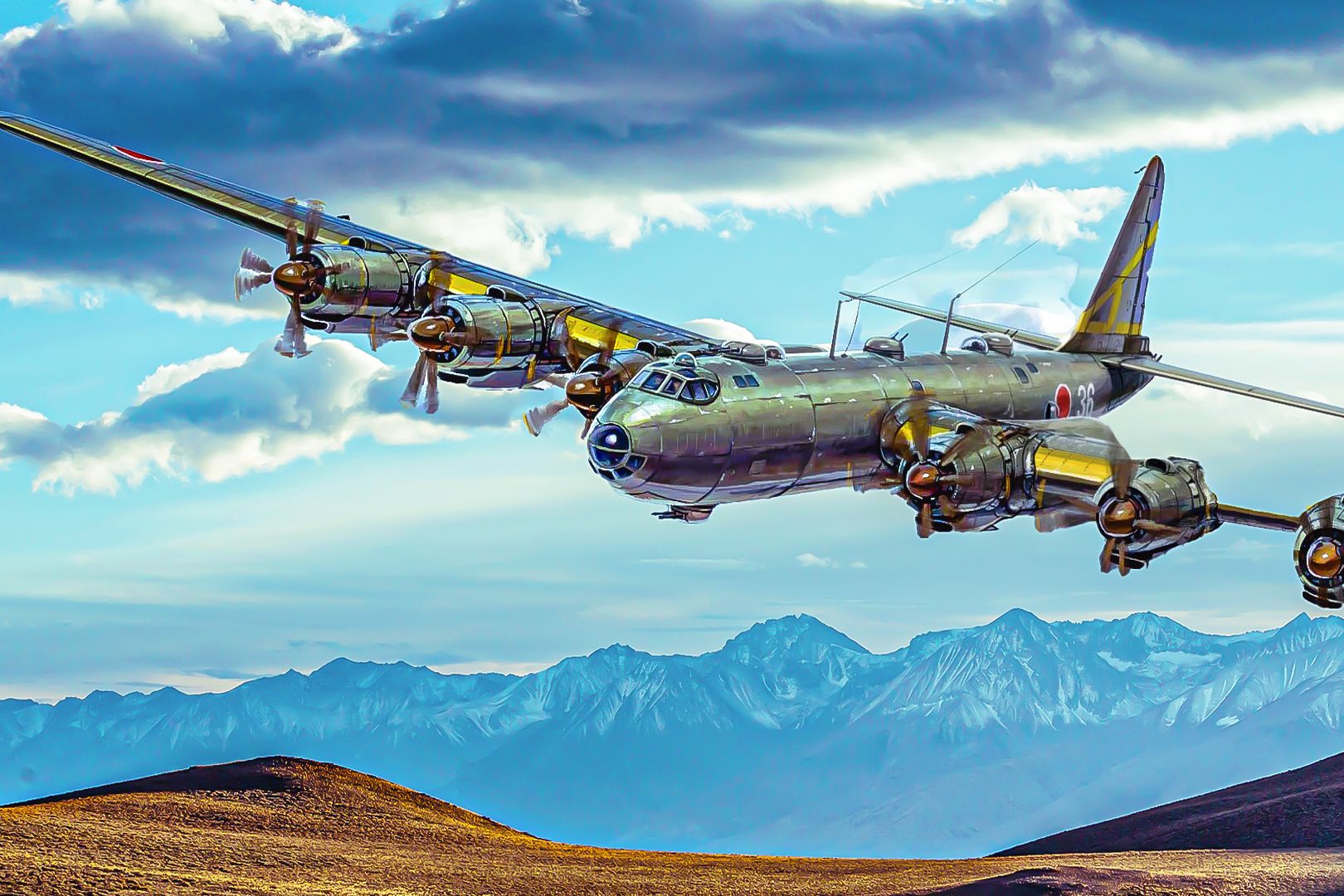Summary Japan's Project Z aimed to create long-range bombers to strike North America. Nakajima worked on Fugaku bombers with ambitious designs, including 40 machine guns. The project was canceled in 1944 as Japan lacked resources, focusing on homeland defense.
The United States enjoyed free reign in the strategic bombing of Germany and Japan in World War II . The US was largely able to bomb and reduce those countries' cities to smoldering ruins without fear of retaliation. While the Germans could bomb the United Kingdom to some degree, the United States was beyond the reach of Germany and Japan.

However, Japan tried to build a long-range bomber that it could use to bomb the US and bring the war to the American homeland. It was the United States and the United Kingdom (plus Germany to some degree) that dominated heavy and medium bomber production in the war . Imperial Japan's Project Z Project Z was Imperial Japan's World War II effort to develop a long-range intercontinental bomber to strike North America.
It was the Japanese counterpart to the German Amerikabomber project (where the Germans worked on developing a 7,000+ mile-range bomber to bomb New York City). The Germans built several prototype bombers to strike NYC, including the Messerschmitt Me 264. The United States also attempted to develop ultra-long-range bombers to strike Germany directly from North America, with the Northrop YB-35 and Convair B-36 being developed late in the war and post-war.
The project began in 1942 after the US entered the war. The plan was for the bombers to take off from Japan's northern Kuril Islands, bomb the US, and then continue on and land in German-occupied France. From there, they would be refueled and rearmed and make a return sortie.
Messerschmitt Me 264 ('Amerikabomber') Number built: 3 prototypes Crew: 8 Max take-off weight: 123,460 lbs Powerplant: 4 × BMW 801D (or BMW 801G) 14-cylinder air-cooled radial piston engines Range: 9,300 miles Wingspan: 68 feet 6.75 inches Japan's Nakajima Aircraft Company got to work developing the engines and working on a bomber able to reach the United States. Nakajima presented two of the three designed for the Imperial Japanese Army - the Nakajima G10N and the Nakajima G5N (Kawasaki offered its Kawasaki Ki-91).
While prototypes were built, none of these aircraft went into production. No prototype of the G10N was ever built, although six Nakajima G5Ns were built, and over half of the first Kawasaki Ki-91 was built. Though nowhere near as famous s the Mitsubishi Zero, the Kawasaki "Frank" might've been Imperial Japan's best WW2 fighter plane.
Nakajima G10N Fugaku The Nakajima G10N Fugaku would have been an ultra-long-range heavy bomber. Development of the G10N Fugaku started in January 1943 in Mitaka, Tokyo. And was to have six contra-rotating propellers.
The designs called for the aircraft to have a wingspan of 207 feet, a length of 131 feet, and a height of 28.8 feet. If the engines had been developed, they would have supplied 5,000 horsepower each.
The bomber could have carried 44,000 lbs of payload depending on the range and fuel requirement. Nakajima G10N Fugaku Role: Ultra-long-range heavy bomber Planned range: Approx. 12,000 miles Number built: none Planned engines: 6x 4-row 36-cylinder 5,000 hp Ha-54 (Ha-505) Max speed: 475 mph Wingspan: 207 feet Had the Fugaku been built, the plan was to use it to strike industrial targets along the West Coast of the United States, the Midwest, and the Northeast (target cities would have included San Francisco, Detroit, Chicago, and New York).
Designs also called for it to jettison some of its landing gear after take-off to save on weight (not all the landing gear was needed to land empty). Military Watch Magazine states, " There were reportedly set to be three derivatives of a Japanese intercontinental range military aircraft, and alongside the bomber, the airframe was also set to be developed into a transport for 300 troops and a gunship with forty downward-firing machine guns in the fuselage for intensive ground attacks—firing 640 rounds per second. " The Japanese started the Pacific War with some of the best-in-class aircraft but ended the war building crude, disposable Kamikaze aircraft.
Cancelation of the Nakajima G10N Fugaku However, Nakajima G10N Fugaku was canceled in 1944 as the war turned decisively against Japan, and the country focused its limited and dwindling resources on the more pressing need to defend its home islands. In the end, while the United States built the cutting-edge and expensive B-29 Superfortress bombers and firebombed Japan, Japan went backward, building thousands of cheap, rudimentary, disposable Kamazaki aircraft like the Nakajima Ki-115 . The Nakajima G10N Fugaku was too ambitious for Imperial Japan's wartime restraints.
Nakajima's 4-row 36-cylinder 5,000 hp Ha-54 engine proved too complex to develop. Imperial Japan's industrial capacity significantly lagged behind that of the United States, the United Kingdom, and Germany. Long-range bombers like this would tax any country's industrial and technological capabilities—even the B-29 project was the most expensive of the war at $3 billion—much more than the Manhattan Project at $1.
9 billion. The Japanese only ever managed to launch an air raid on the United States proper once (Alaska and Hawaii were territories). In September 1942, a small Yokosuka E14Y floatplane launched from a submarine dropped two incendiary bombs in Oregon with the aim of starting a forest fire.
It failed..



















